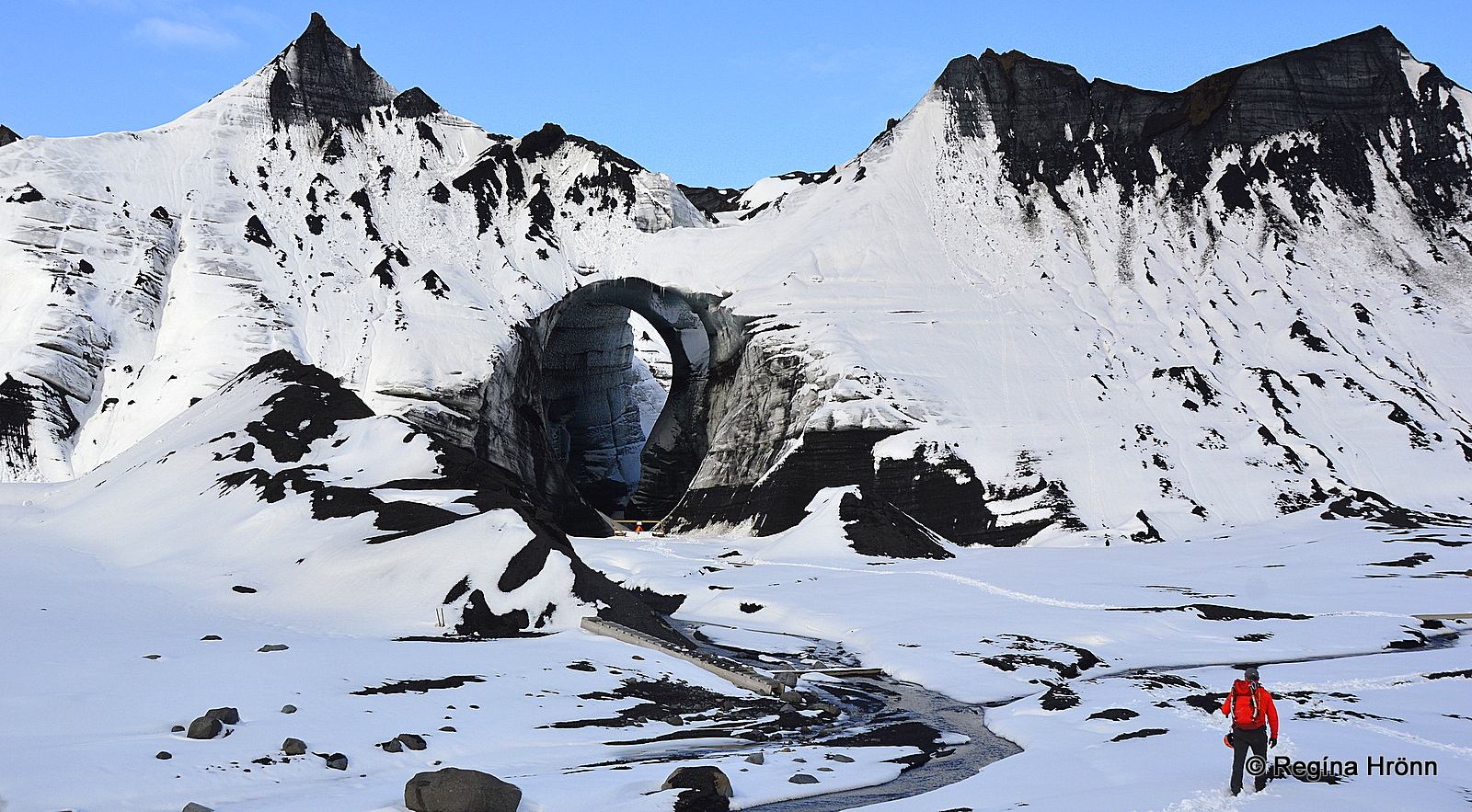
The Katla ice cave
In this travel-blog I am going to tell you a little bit about the Mýrdalsjökull glacier, the Katla volcano, and the ice caves which form in the glacier.
The Katla ice cave, which changes in appearance every year like the seasonal ice caves, is located in the Kötlujökull glacier, a glacier tongue of Iceland’s fourth largest glacier, the mighty Mýrdalsjökull glacier.
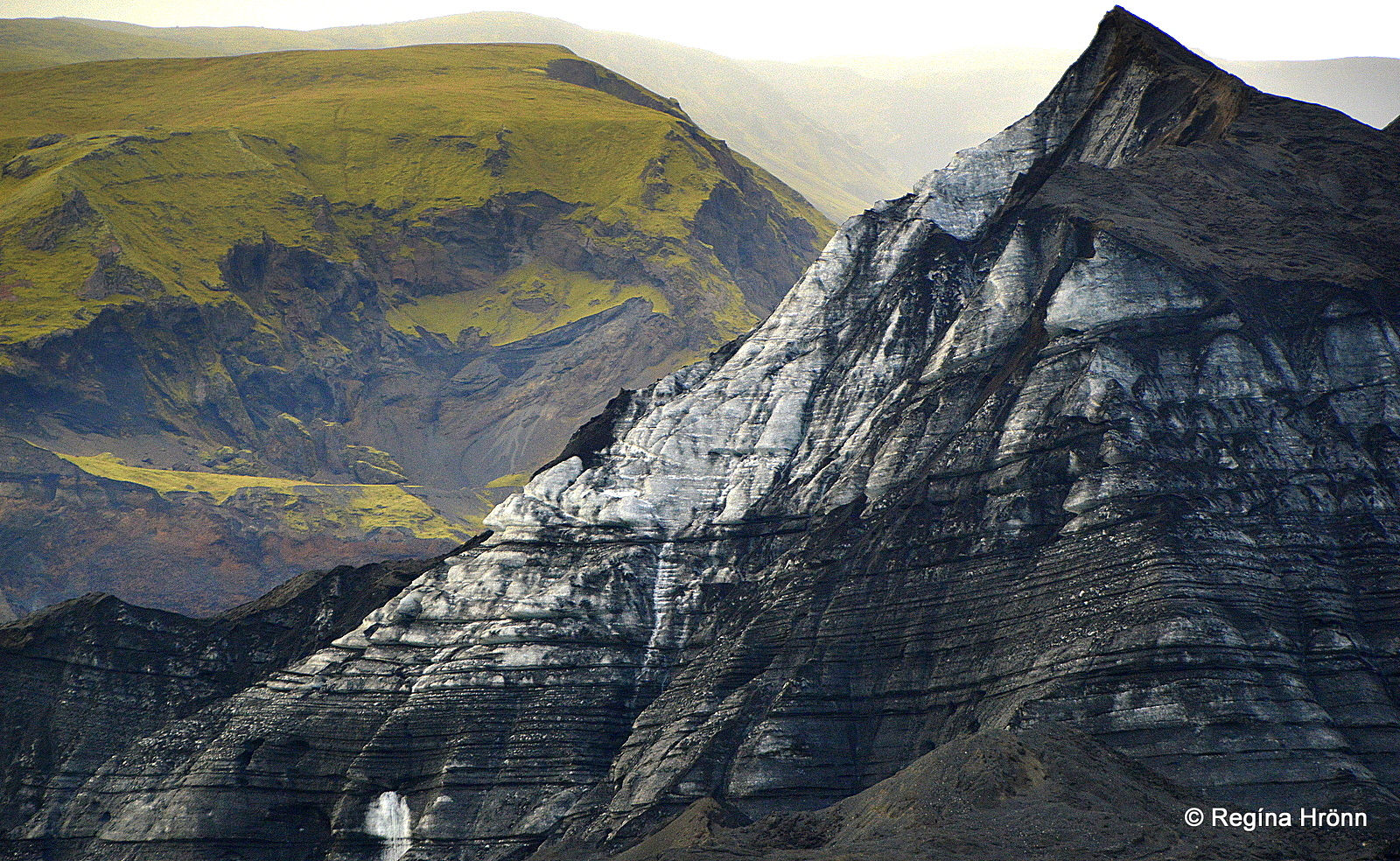
Kötlujökull – the Katla glacier
The seasonal ice caves which form in the wintertime can be visited from November until April, but the Katla ice cave in South Iceland can be visited all year round.
When water from the melting glaciers finds its way and carves an opening in the ice, these extraordinary ice caves are formed.
And we get an opportunity to have a peek inside shiny ice formations in black and blue ice tunnels in the glacier tongues.
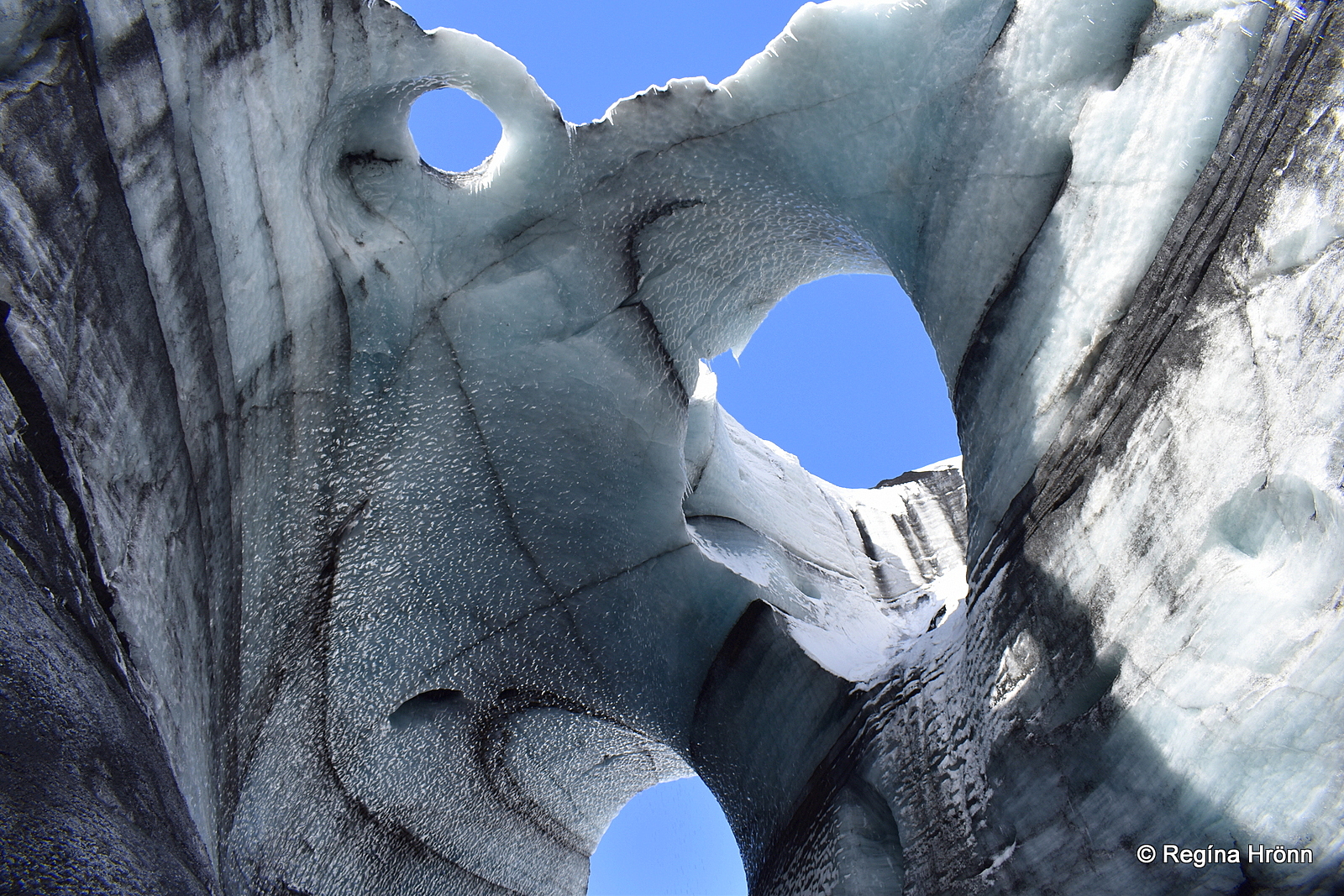
Layers of ash in the glacier from Katla eruptions
Lurking deep below the approximately 590 sq. km Mýrdalsjökull glacier is one of the most dreaded volcanos in Iceland – the subglacial Katla volcano!
Katla last erupted in 1918, creating havoc in this area. And we are waiting for it to erupt again…
If you remember the Eyjafjallajökull glacier eruption back in 2010, which closed down air traffic and people were stuck in airports all around the world, then Katla is much more perilous.
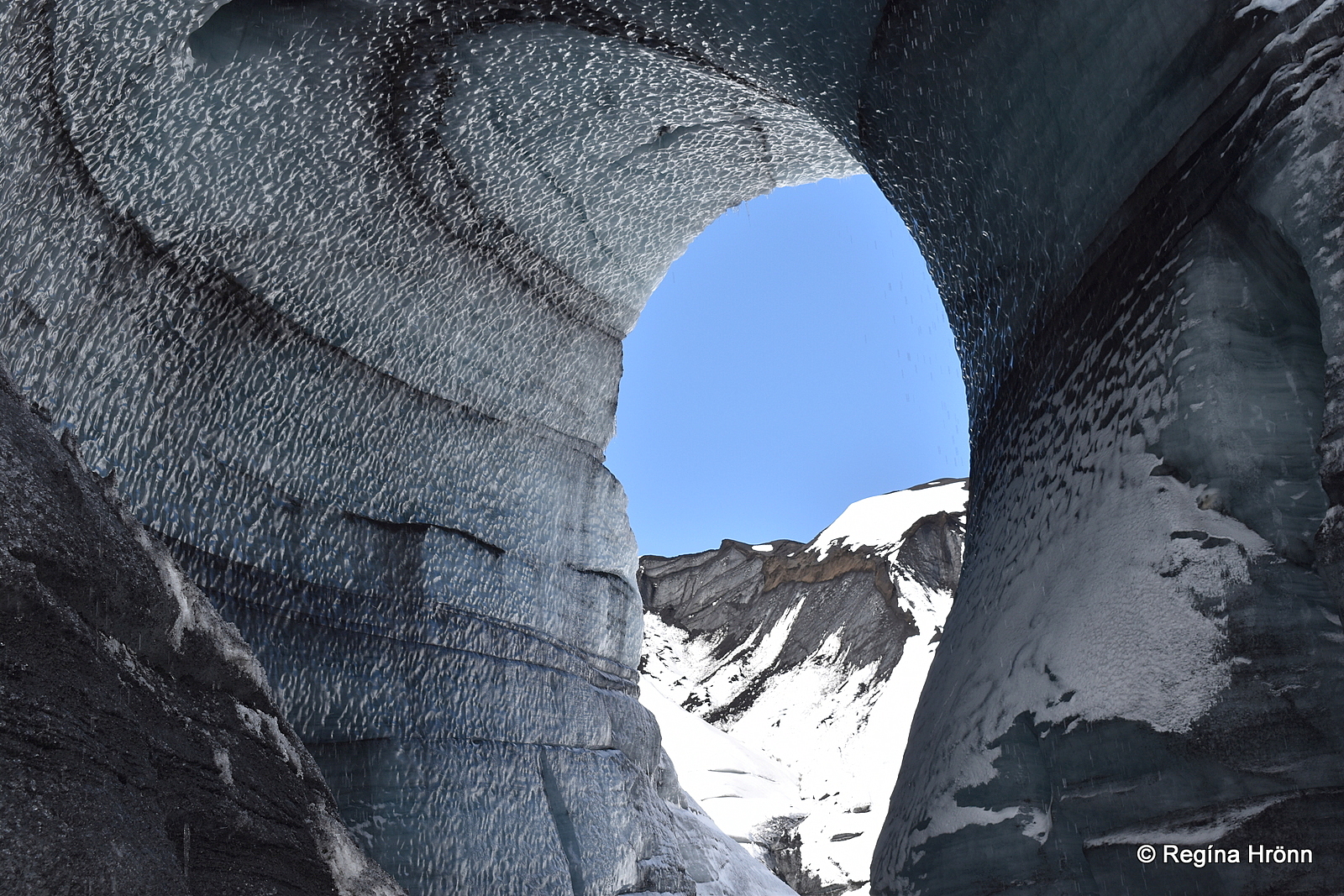
Inside the Katla ice cave
When Katla erupts, it is not a tourist attraction like our latest eruption in Geldingadalir, it is a cataclysm.
The ash clouds of these volcanos are massive, as you will see when you visit the Katla ice cave.
The black stripes you see in the ice are layers of ash from the previous eruptions in the Katla volcano. Visiting the ice caves is like walking through a tunnel of Iceland’s volcanic history.
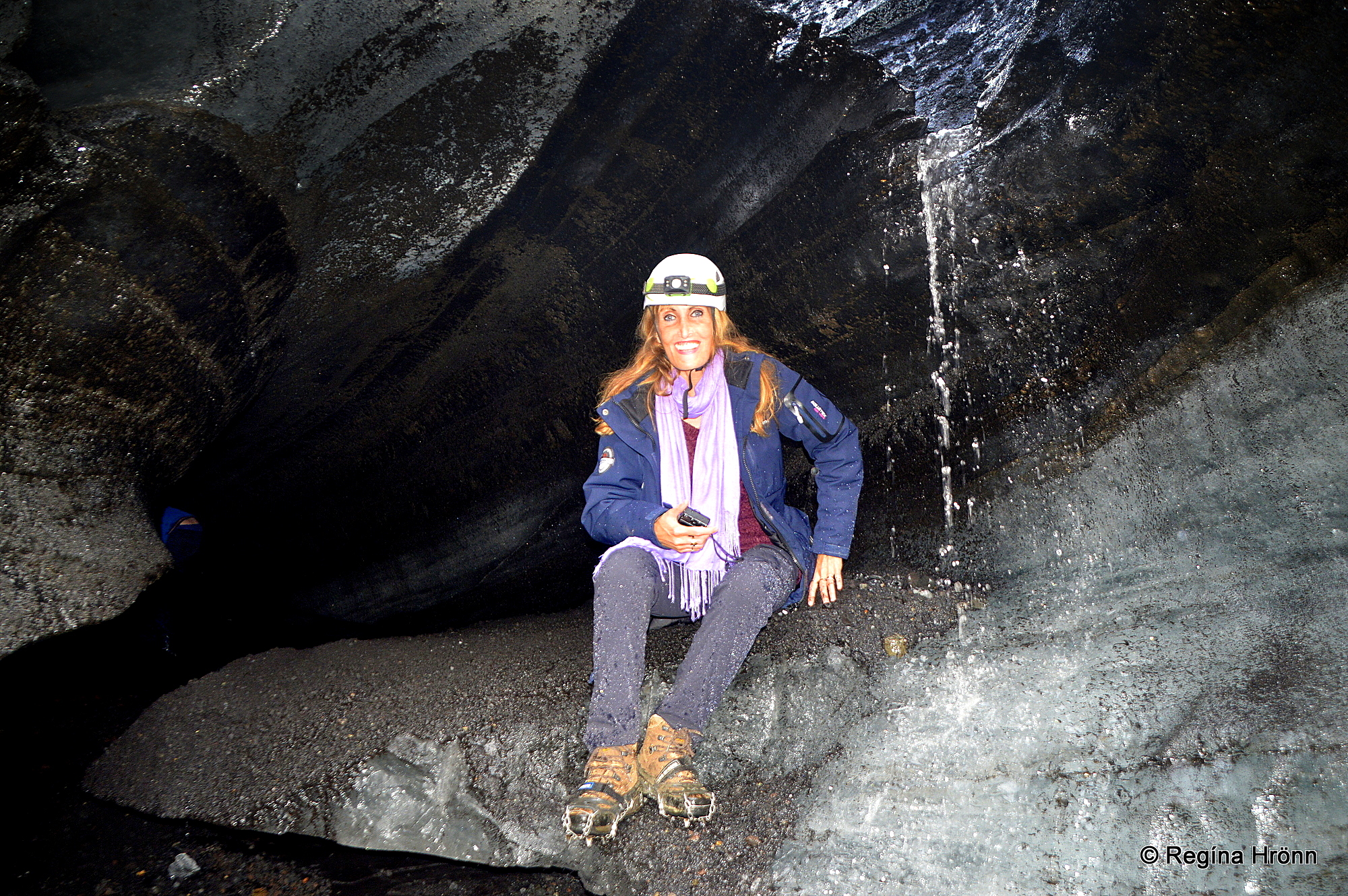
Inside Katla ice cave
I have visited the Katla ice cave a couple of times and it changes in appearance every time I visit it.
Most of the photos I show you in this travel-blog are from my 2021 visit to the Katla ice cave.
On my first visit to the Katla ice cave it looked like this:
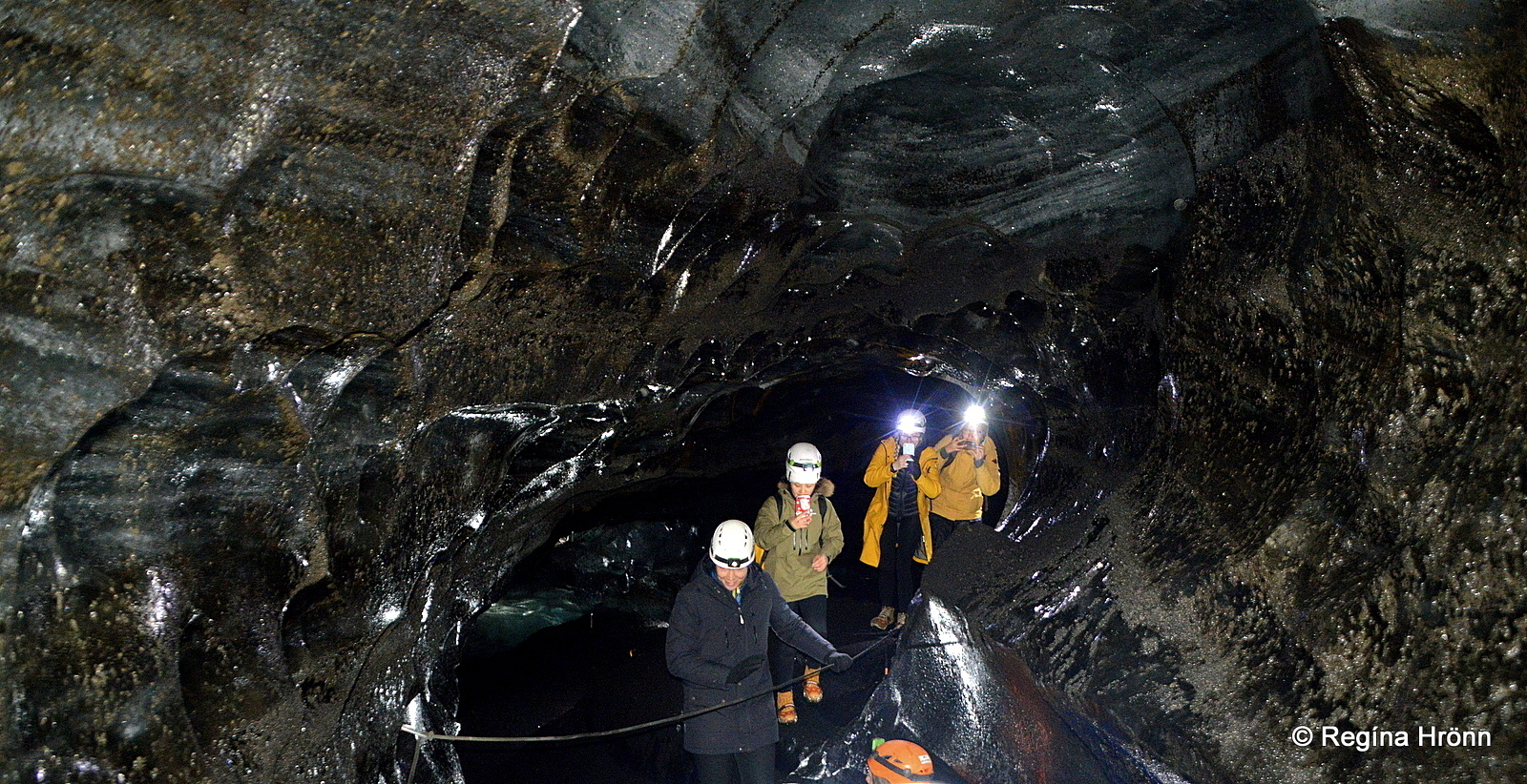
Deep inside the Katla ice cave
The ice cave was dark inside, yet extraordinarily beautiful.
You can see the layers of the black ash pressed between the blue ice of the glacier.
The blue ice is the oldest part of the glacier and it can take on the most amazing shades of blue, ranging from powder blue to deep royal blue.
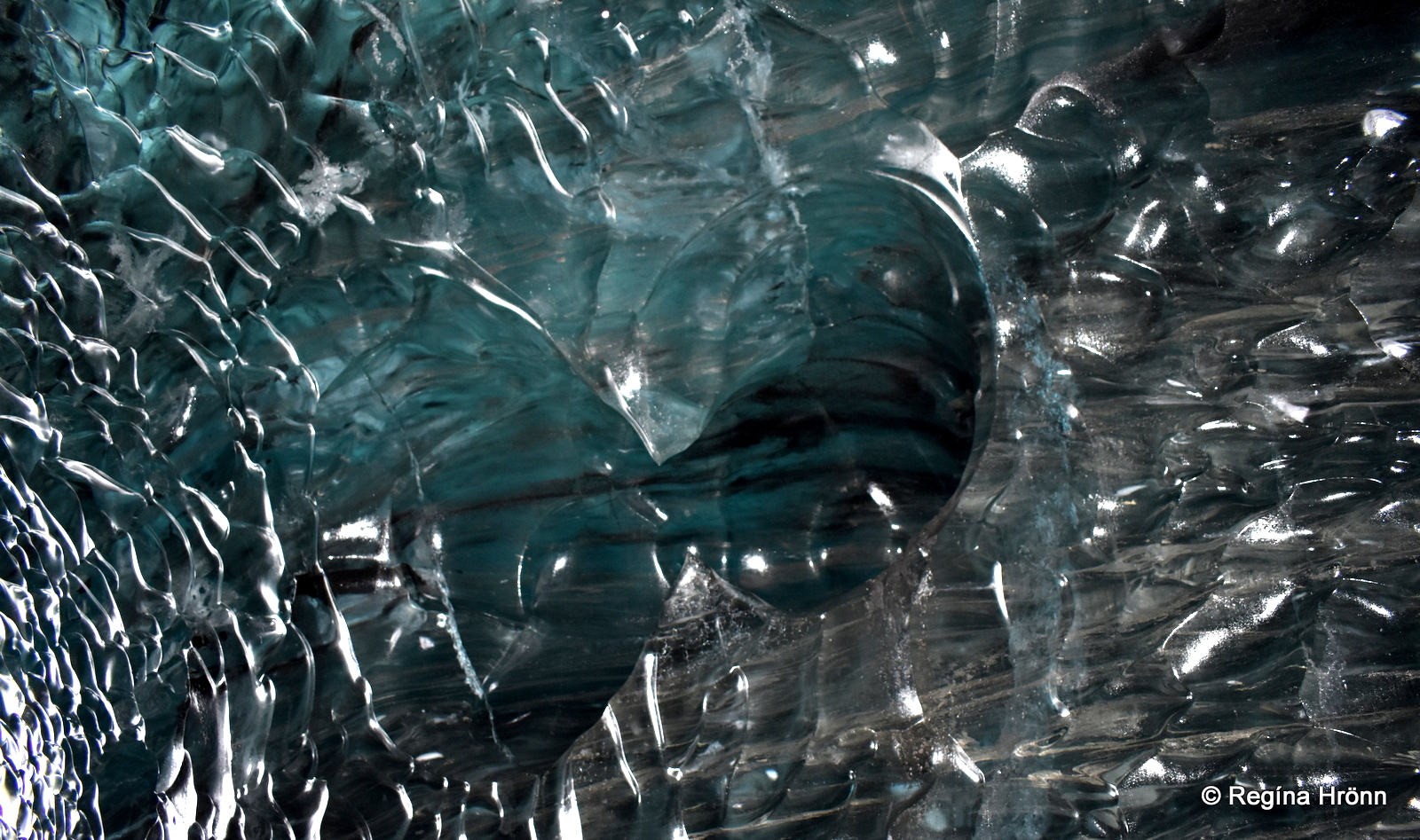
Blue and black ice in the ice caves
As you can see in my photos then special crampons are needed for walking on the ice and helmets with headlamps.
The glacier crampons give us a very good grip on the ice, so they are very much appreciated.
It is very easy to bump one’s head while inside the lava caves and ice caves of Iceland, so never enter a cave without a helmet.
Also wear good hiking shoes, gloves, a hat, and warm and waterproof clothes. I would advise you to wear something yellow, as that color makes a good contrast to the black and blue ice.
The departure for the Kötlujökull glacier is from Vík village. The driver-guide will take you on a 45-minute drive from Vík through the most beautiful black volcanic sand plains, which remind us of the vicinity to the Katla volcano.
After being equipped with all the necessary tools for visiting an ice cave a relatively short hike will take you to the glacier.
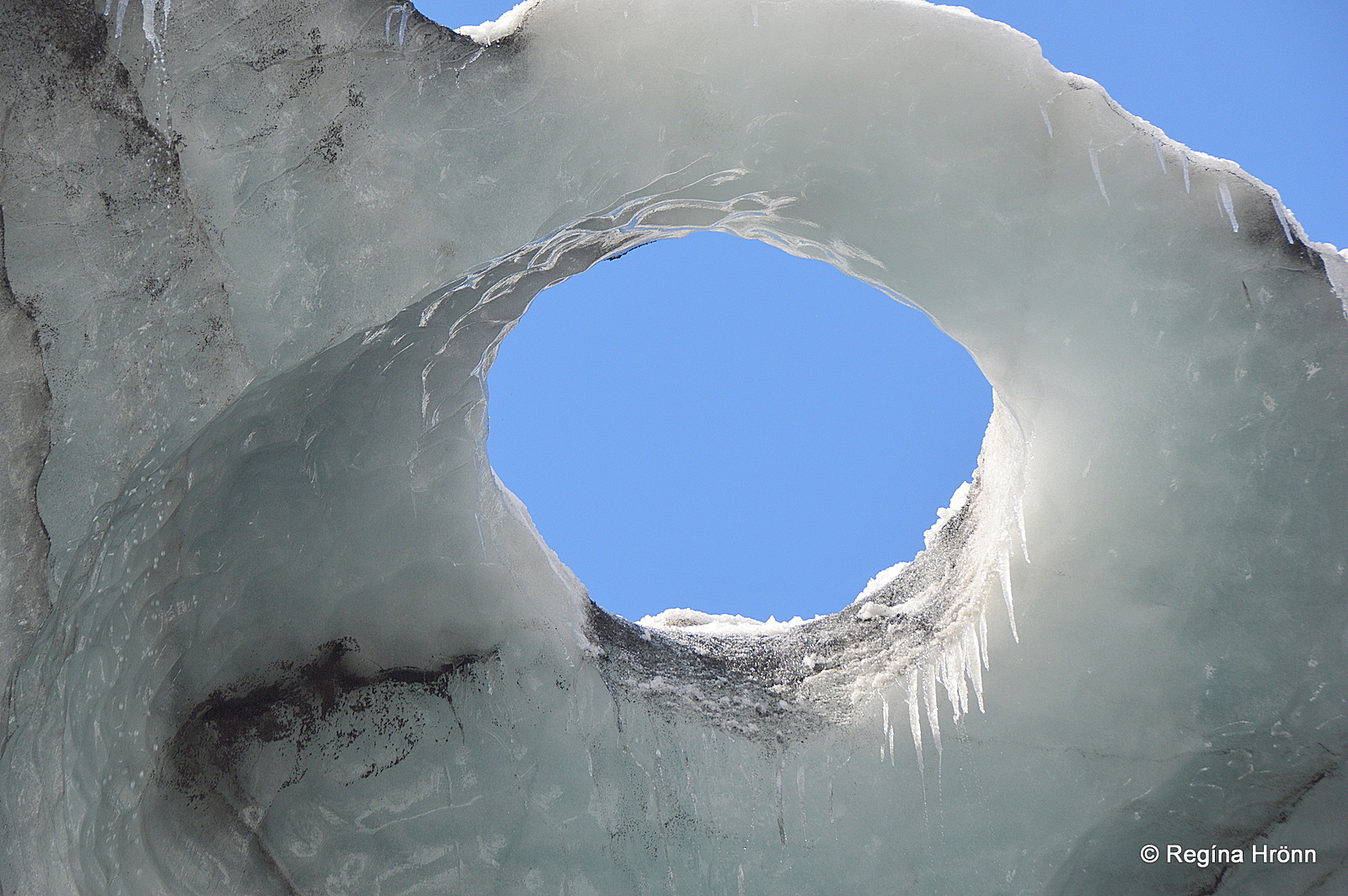
A round opening in the Katla ice cave – blue skies are a plus
The ice takes on all kinds of formations and colors as you can see in my photos, ranging from white, blue, and pitch-black, when sand and ash merge with the ice.
Upon entering the cave you will understand why the Katla ice cave is often referred to as the Dragon glass cave.
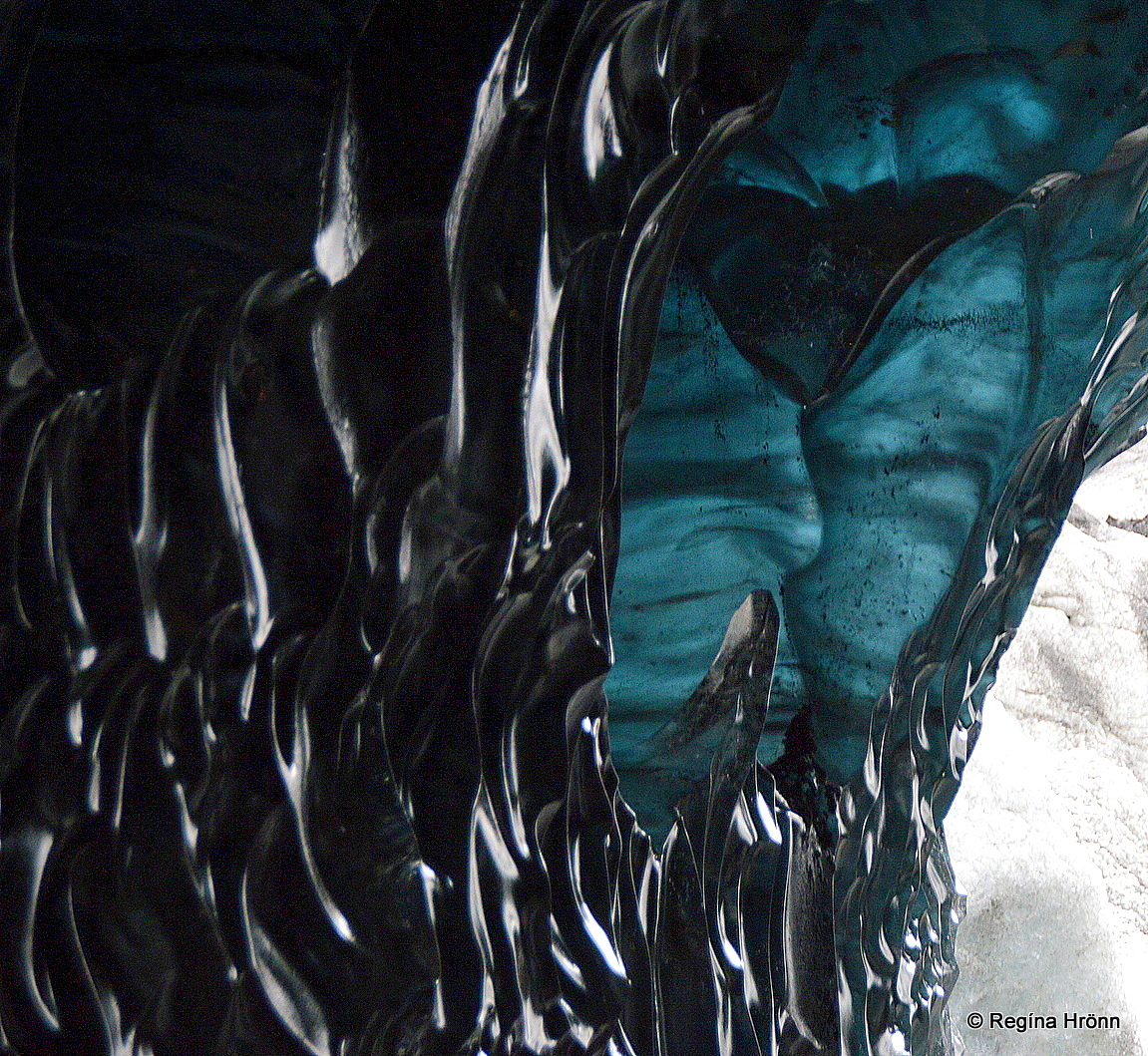
Black and blue ice in the ice caves
The seasonal ice caves have got names such as the Sapphire ice cave, the Black Diamond, and the Chrystal cave, and the names describe their appearance and the feeling you will get when entering these caves.
See also my travel-blog: the Extraordinary Ice Caves of Iceland – a Winterworld Fairtytale
No matter how often I visit the ice caves, and I have visited many of them, I am always in awe when I enter an ice cave.
In the photo above and below which I took at the Sapphire ice cave by Jökulsárlón glacial lagoon, you can see why the ice caves have got such beautiful names.
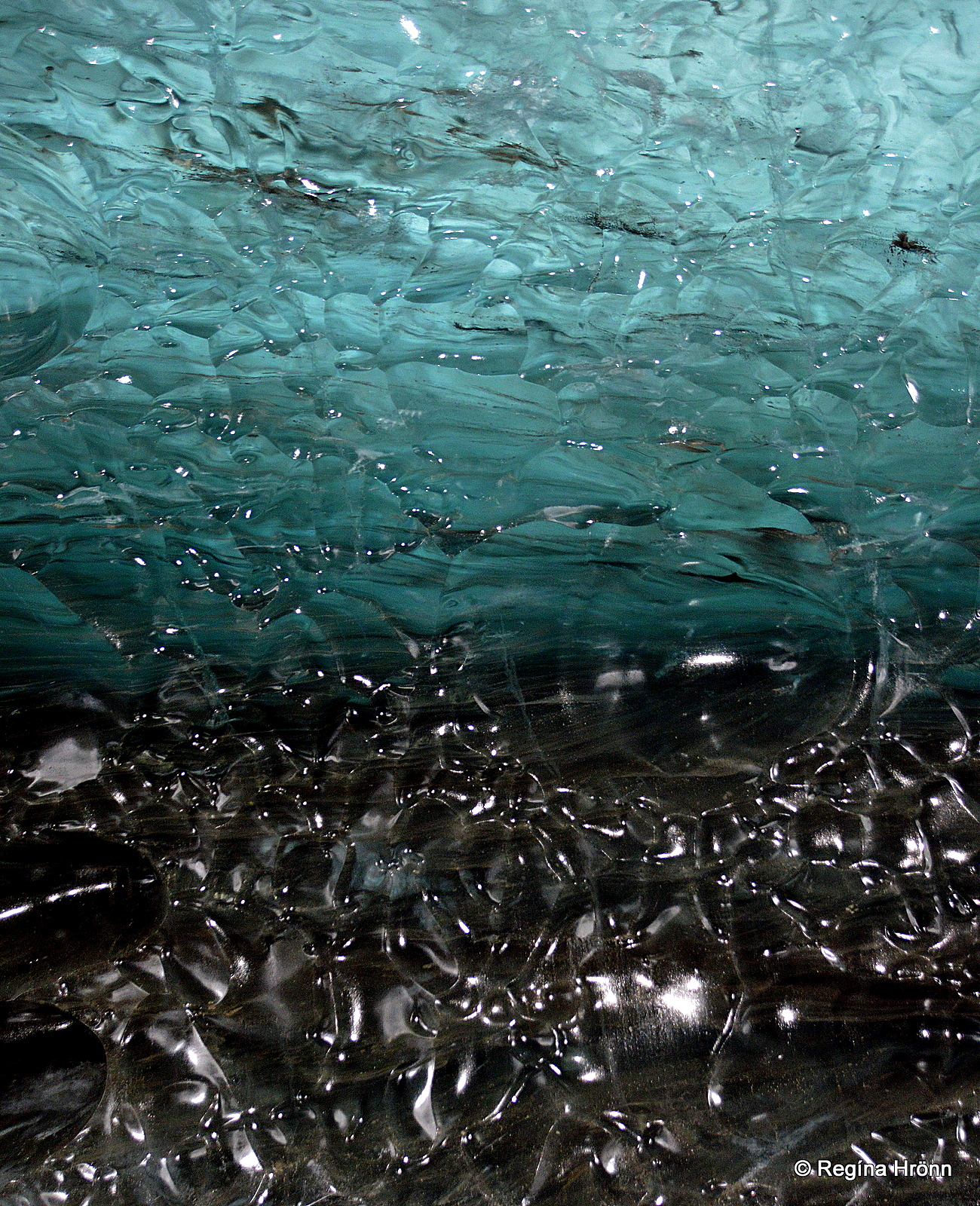
Black and blue ice in the ice caves
If you want to know more about this area before visiting the Katla ice cave, then I have written another travel-blog about Katla volcano and Kötlutangi spit – the southernmost point of Iceland, which got created in the 1918 Katla eruption.
That record was previously held by Dyrhólaey, which I will be showing to you in my next travel-blog: Cape Dyrhólaey in South-Iceland – the One with the big Arch.
In the Katla travel-blog I have included accounts about people who witnessed the massive glacial floods during a volcanic eruption in the subglacial Katla volcano.
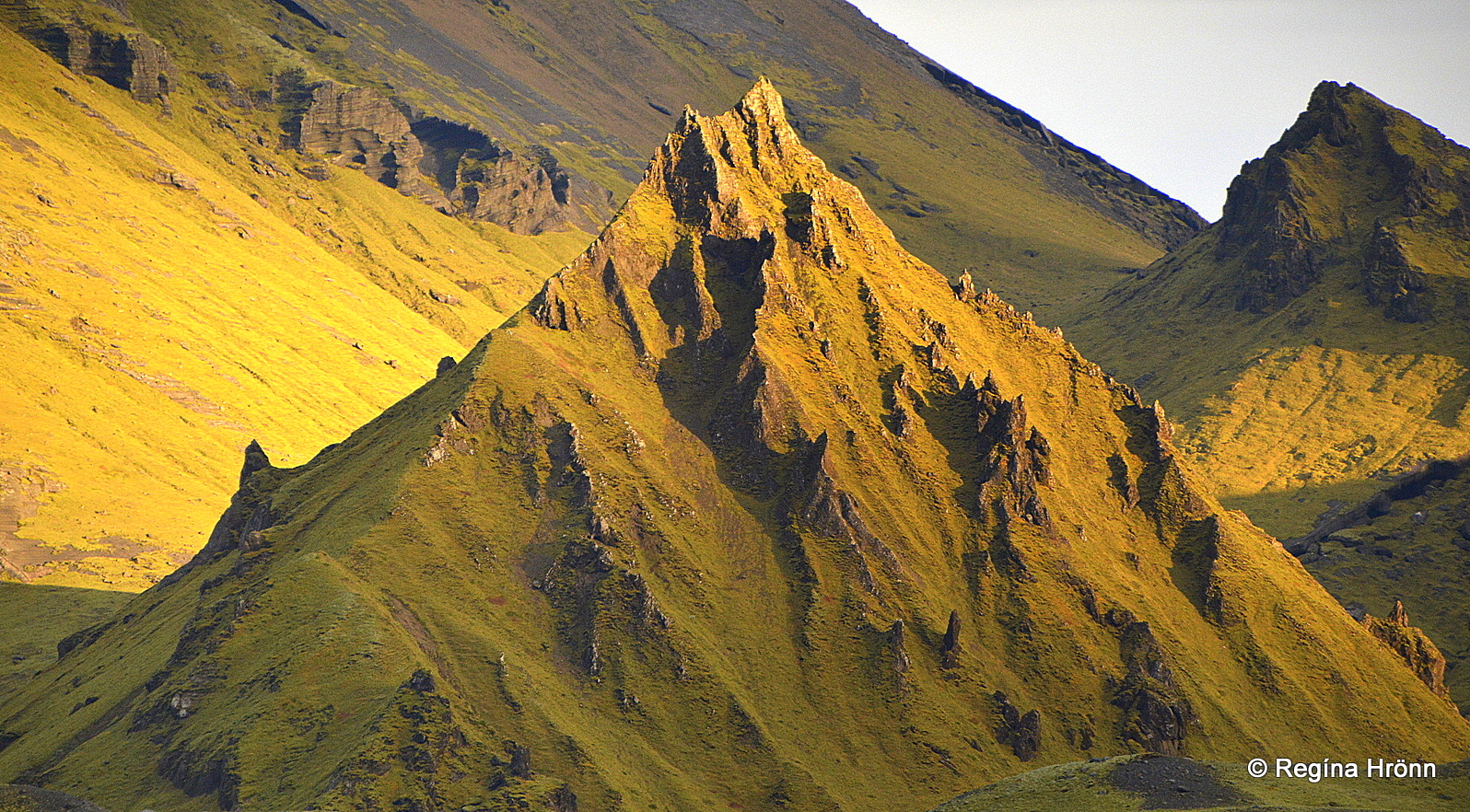
Hafursey close to the Katla glacier – 6 men sought shelter in a cave in Hafursey during the 1755 glacier burst
One of them is told by Kjartan Leifur Markússon who lived on Hjörleifstangi promontory when Mt. Katla erupted back in 1918.
He witnessed the roaring glacial burst approaching the promontory at a great speed, carrying huge icebergs. What an absolutely frightening sight this must have been.
The glacial water carries the icebergs to the sea which creates a tsunami-like occurrence, which makes the sea bounce back and crash onto land – as far as I can understand.
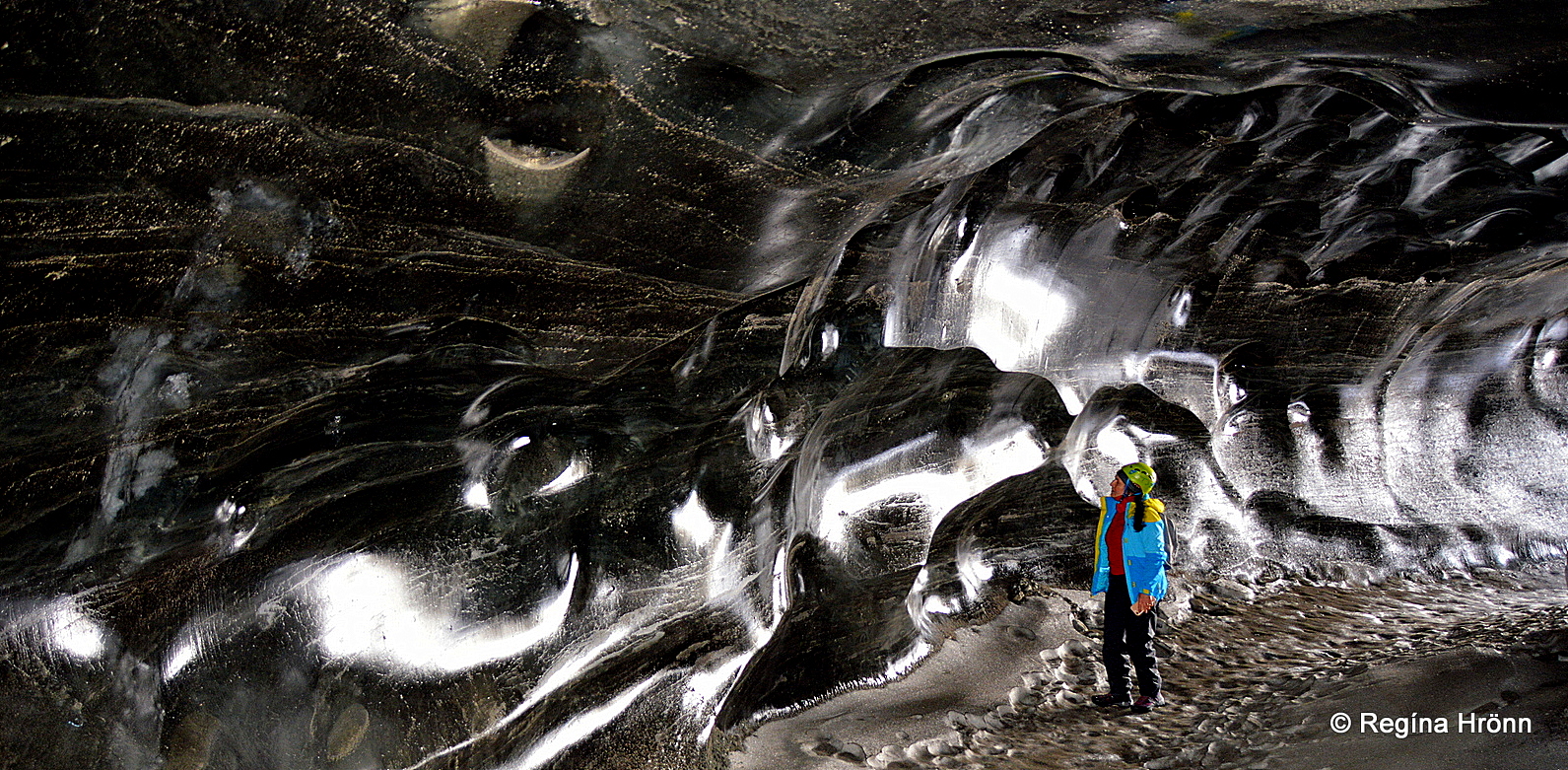
Visiting a shiny black and blue ice cave
Visiting the ice caves is quite a unique experience and if I were asked to recommend one must-thing to do in my country, then I would recommend visiting these ice caves, as I believe that this experience leaves no man untouched.
Then I would also recommend the Golden Circle and the Diamond Circle 🙂

The Katla ice cave – the guide leading the group
If you want to visit an ice cave and haven’t got time to go as far as the 372 km to Jökulsárlón glacial lagoon where several of the seasonal ice caves form in the wintertime, then Vík is only 187 km away from Reykjavík.
And let’s remember the ice cave rule: the ice caves cannot be visited without trained glacier guides, as the glacier tongues move under their own weight and calve, so it is not safe to visit them without a professional guide.
Have a lovely time visiting the ice caves of Iceland – it is truly an unforgettable experience 🙂
